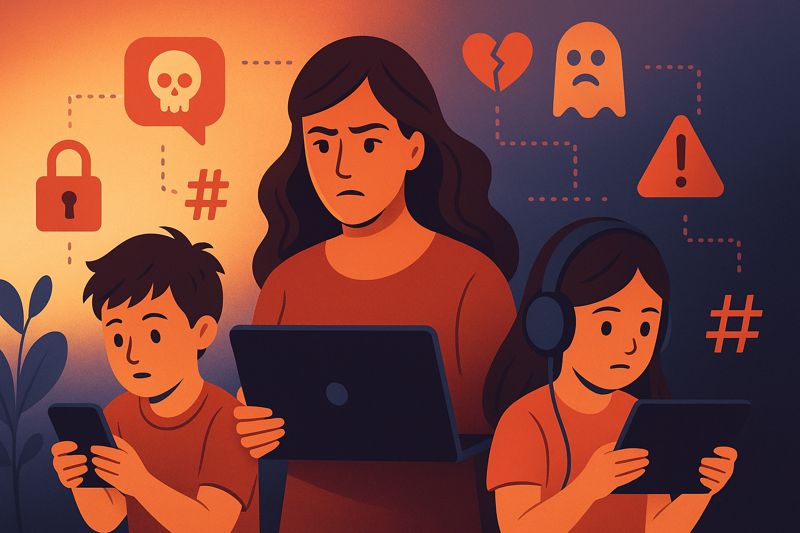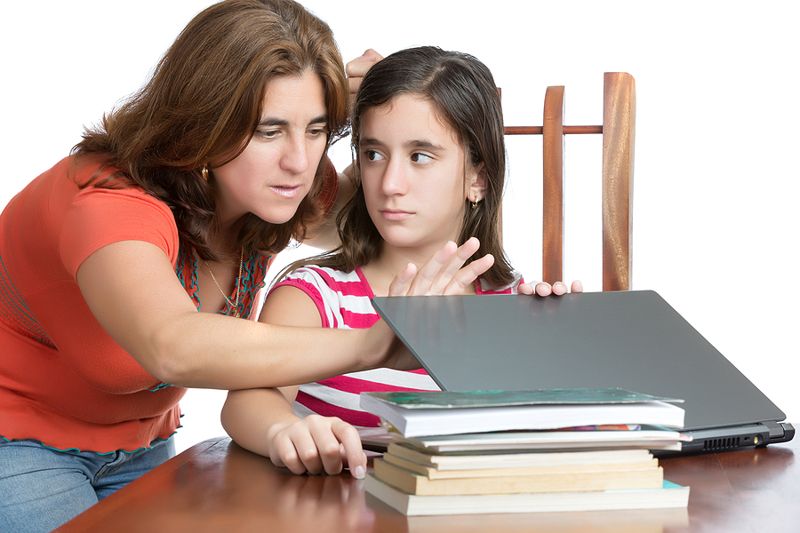
Our children’s digital lives have become one of the biggest challenges for UK parents in 2025.
Between social media, online gaming, and exposure to harmful content, we need to learn how to guide them safely in this connected world, so even more information available. British authorities are tightening their child online safety rules, inspired by international standards that aim to protect minors in every corner of the digital space.
The Reality of Screens in the UK

Children in the UK now spend an average of 4 hours and 32 minutes a day on screens. That’s nearly a school day’s worth. In London, 87% of 8- to 12-year-olds have their own tablet. In Manchester, the figure is slightly higher at 90%. We’re equipping our children earlier than ever — often without fully considering the long-term consequences.
UK parents spend on average £230 per year per child on digital devices. A smartphone by age 11, a tablet by 8, and a games console by 9 have become the norm. Unsurprisingly, digital habits set in fast.
The worrying part? 71% of 10-year-olds have already seen violent content online, 43% have stumbled upon sexual material, and one in five children in the UK experiences cyberbullying. The average age of a child’s first negative online encounter has dropped to 9 years old. These statistics are sobering.
Tools That Really Work
Some tools make a real difference. Qustodio, widely used in the UK, offers real-time geolocation, app blocking, and social media monitoring. According to Ofcom surveys, 65% of British families who use it recommend it. Net Nanny is another favourite, praised for its ability to filter out inappropriate content without slowing down devices.
But before you spend money, check what you already have. Apple’s built-in Screen Time allows you to limit apps by category and block 18+ content. On Android devices, Google Family Link does the same for free. These features are often enough — provided parents actually use them.
Yet here’s the mistake many of us make: we jump to technology before education. The truth is, children need to understand why limits exist, not just feel controlled by them.
Education First

At ages 6–8, keep it simple: “The internet is like the street. Some places are safe, others are dangerous.”
At ages 9–12, get specific: “If someone asks you for personal photos, that’s suspicious. You come straight to me.”
At 13 and above, hand over responsibility gradually: “Everything you post online builds your digital reputation. Think before you hit send.”
Families that succeed in managing screen time share common habits:
- No screens in bedrooms (89% of child psychiatrists recommend this)
- No screens at the dinner table
- Stopping screen use an hour before bed to protect sleep cycles
Most importantly, they negotiate rather than impose. Teenagers who understand the reasons behind the rules respect them more than those facing blunt bans.
Warning Signs to Watch Out For
Too much screen time shows up in three areas:
- Physical: constant tiredness, headaches, disrupted sleep
- Emotional: irritability when devices are taken away, lack of interest in offline activities, lying about usage
- Social: withdrawal from real-life friends, refusal to leave their room, loss of interest in hobbies
If you notice three or more of these signs, it’s time to intervene. And remember: 76% of British teenagers admit to lying about their online habits. Don’t rely on words alone — check objectively through built-in screen time reports.
Strategies by Age Group
- 6–10 years old: zero digital autonomy. Parents supervise everything. Maximum 1 hour per day of approved content.
- 11–14 years old: the negotiation years. Gradual introduction of social media, “family contracts,” and discreet monitoring.
- 15 and up: preparation for independence. A trust-based contract, occasional check-ins, and open conversations about their online experiences.
Crises and How to Manage Them
- Tantrums when screens are switched off? Normal. Prepare by giving 15 minutes’ notice, offer alternatives, and praise calm behaviour.
- Lying about screen use? Common. Check objectively, reduce time as a logical consequence, and reward honesty.
- Lost with TikTok, Discord, or Snapchat? That’s fine. Ask your child to show you. Create your own account to understand the platform, and approach with curiosity, not judgment. Children love teaching parents about “their” world.
What Works in Balanced Families
Children learn more from what we do than what we say. If we scroll endlessly through Instagram or answer work emails during dinner, our words lose all authority. The most balanced families share three traits:
- Parents lead by example
- They create screen-free family activities
- They keep open conversations about risks and experiences
The golden rule: restrictions apply to everyone. A parent glued to their phone while banning kids’ devices at dinner sends the wrong message.
The Three Rules That Change Everything
- Absolute screen-free zones: bedrooms, the dining table, and short car journeys
- Strict hours: no screens before 7 a.m., off an hour before bed
- Mandatory activities before screens: homework, 30 minutes of physical activity, and at least one household chore
Protecting children digitally isn’t about banning — it’s about balance. With patience, consistency, and clear family rules, the online world becomes less of a threat and more of an opportunity. Our children may resist now, but one day they’ll thank us for giving them boundaries that helped them grow up safe and strong.
